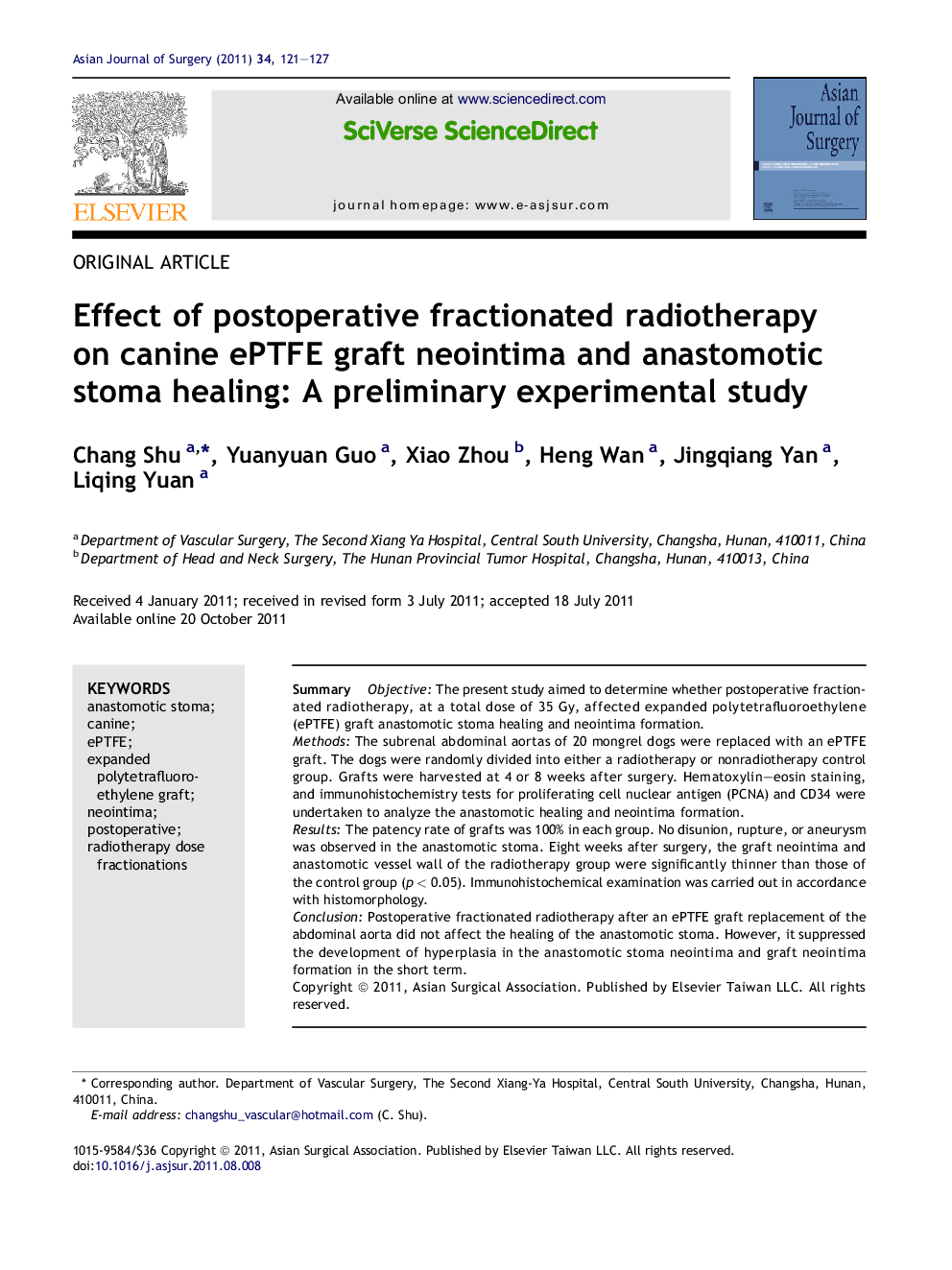| Article ID | Journal | Published Year | Pages | File Type |
|---|---|---|---|---|
| 4282933 | Asian Journal of Surgery | 2011 | 7 Pages |
SummaryObjectiveThe present study aimed to determine whether postoperative fractionated radiotherapy, at a total dose of 35 Gy, affected expanded polytetrafluoroethylene (ePTFE) graft anastomotic stoma healing and neointima formation.MethodsThe subrenal abdominal aortas of 20 mongrel dogs were replaced with an ePTFE graft. The dogs were randomly divided into either a radiotherapy or nonradiotherapy control group. Grafts were harvested at 4 or 8 weeks after surgery. Hematoxylin–eosin staining, and immunohistochemistry tests for proliferating cell nuclear antigen (PCNA) and CD34 were undertaken to analyze the anastomotic healing and neointima formation.ResultsThe patency rate of grafts was 100% in each group. No disunion, rupture, or aneurysm was observed in the anastomotic stoma. Eight weeks after surgery, the graft neointima and anastomotic vessel wall of the radiotherapy group were significantly thinner than those of the control group (p < 0.05). Immunohistochemical examination was carried out in accordance with histomorphology.ConclusionPostoperative fractionated radiotherapy after an ePTFE graft replacement of the abdominal aorta did not affect the healing of the anastomotic stoma. However, it suppressed the development of hyperplasia in the anastomotic stoma neointima and graft neointima formation in the short term.
